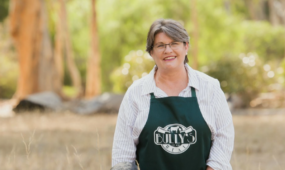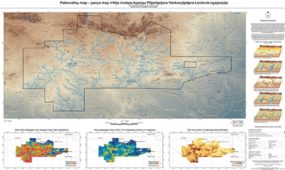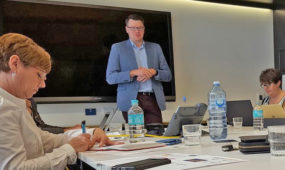Solar project gives ray of hope to struggling Australian grape growers
Ideas
A RENEWABLE energy project in Australia’s largest grape growing region is giving struggling vignerons a sunny alternative.

Sign up to receive notifications about new stories in this category.
Thank you for subscribing to story notifications.
An electrical services company in South Australia’s Riverland is looking to build dozens of community-owned solar farms and sell the energy on Australia’s volatile spot market.
The Riverland is about 250km east of the South Australian capital Adelaide and stretches for 120km along the banks of Australia’s biggest river, the Murray.
Renmark–based Yates Electrical Services began its Red Mud project this year and has been running a 180kw test site for about three months.
The project ultimately aims to work with landowners to set up 100kw-200kw solar farms and sell the energy to the national electricity grid through the spot market.
Managing Director Mark Yates said under the Red Mud project, landowners could lease their land to be used for a solar farm, lease the land and buy into a portion of the farm or choose to own the entire solar farm outright.
He said the test site had shown that a 10 per cent return on investment per year was achievable.
“Red Mud is something that we dreamt up to be a lot more scalable to people locally as opposed to big superannuation funds or merchant banks investing in massive projects,” Yates said.
“Effectively with Red Mud everything the site generates in the form of energy and the Large Generation Certificates are retained locally in the community.”
Yates said a typical 200kw farm would cover an acre (4000sq m), include 800 solar panels on ground-mounted racks, cost between $300,000 and $400,000 to set up and return about $40,000 a year.
Originally a citrus and stone fruit growing region, the Riverland turned to wine grapes in the 1980s and ‘90s and now accounts for a quarter of Australia’s annual crush. But low prices in recent years have many growers considering their future in the industry.
“There are a lot of growers in the Riverland who may have taken exit grants or who may be reconsidering the value of reinvesting back into vines or citrus because of high water prices and low fruit prices. This offers a new industry on a national market,” Yates said.
“We do have very affordable land and a good solar resource and there are a lot of people questioning whether they should continue on with grapes.”
Yates said the solar farm option was appealing to landowners who were already trading their water allocations and wanted additional income.
“Probably 50 per cent of the visits we’ve done are people who have sold their water licence and the water or people who may have kept their licence but on-sold their water.
“Effectively they’ve got land but they don’t have any water to put on it so the idea of growing crops is completely out the window.”
Spot market electricity prices can reach $14 per kilowatt and are subject to wild fluctuations due to variable demand and supply caused by factors such as temperature and wind.
Yates said when demand was low, particularly at night, the spot market energy price sometimes hit zero and occasionally went into negative numbers.
“The next step for this will be batteries, allowing farms to generate the power and choose the best times to sell it to the market,” he said.
“So effectively, at night time if the price is negative you will get paid to charge your batteries and then when we have these high price events you could sell it back.”
Yates and his team have so far conducted about 40 site visits for landowners interested in taking up the scheme. He said about 25 per cent of sites so far had excellent power connections and adequate land, making them ideal candidates.
The first commercial site, which will be a 50/50 partnership between the landowner and Red Mud is on track to begin generating energy by early August.
In South Australia, producers generating 100kw or more can register to trade Large Generation Certificates and access the spot market.
The state, which has high electricity prices, recently closed its last remaining coal-fired Northern Power Station in Port Augusta but is leading the world in renewable energy initiatives.
Riverland Paringa Council Chief Executive Tony Siviour said the Riverland was well known for its abundant sunshine and had more sunlight hours than most major Australian cities including the Gold Coast.
He said Red Mud had the potential to reduce the region’s reliance on irrigated horticulture and presented an opportunity for people to do something more profitable with their land.
“What Mark is proposing is a good substitute for wine grapes and it definitely has merit,” Siviour said.
Jump to next article



